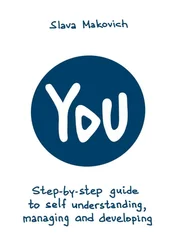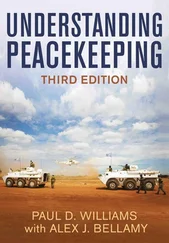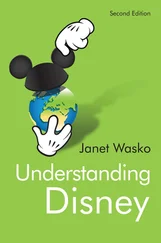There is another equally important reason to study asexuality that has not yet been mentioned. Asexuality offers us a unique opportunity to look at sexuality through a new lens, affording perhaps a clearer (or at least new) view of what sex is and what it is not. In fact, this is one of the reasons why asexuality is interesting to a sexologist like me: It reveals hidden truths about sex. In the same way that homosexuality allows us to understand heterosexuality, and vice versa, asexuality allows us to make broad comparisons to understand sexuality as a whole. This is also why a book on asexuality matters.
In support of my argument, consider further the example above: 33 percent of asexual people were found to be in long-term relationships, compared to 64 percent of sexual people. Again, this information provides evidence that life circumstances often differ between asexual and sexual people, but in these figures (in particular, the 33 percent for asexual people), there is also something interesting revealed or at least suggested about the nature of human sexuality and romance.
We often use the words “sex” (or “sexuality”) and “romance” synonymously; in other words, sex equals romance and romance equals sex. “Romance” is perhaps the softer, gentler, and euphemistic word for “sex” (more on the meanings of romance in chapter 2), but the two words are often used interchangeably. In commercials for an erectogenic drug, advertisers tell men to “Buy Discount Cialis and Enjoy a Romantic Weekend” (ED Pills, 2010 March 30). Of course, we all know what that means: Use this drug and there is plenty of sex ahead, boys! Indeed, the ad goes on to suggest that “With a single pop of Cialis, you will not only enjoy a romantic night; expect a weekend of sizzling nights with your beloved.” So, romance equals sex.
But are romantic relationships always the same thing as sexual relationships (or, to put it somewhat more complexly, does romance always imply a sexual component)? Recently, some psychologically and evolutionarily minded theorists have argued that sex and romance, although often co-occurring, are two different things. These theorists argue that the brain architecture and cognitive processing for lustful attractions emerged at a very different time in evolutionary history than those for romantic attachments (Fisher, 2004). Romance may have evolved relatively recently in our evolutionary history, developing out of processes related to how children attach themselves to parents (Hazan & Shaver, 1987). So, over evolutionary time, the brain architecture and processing originally reserved for securely attaching ourselves to our mothers—a good thing—has been co-opted and modified to allow us also to attach ourselves to our romantic partners. Presto: romantic love is born! In contrast, our faculty for sexual desire and attraction (“the lust system”) may have evolved from the ancient animal mating and sexual attraction systems, much older neuropsychological systems than the attachment system in the brain. So what are we to make of asexual people who form long-term (and presumably) “romantic” relationships (33 percent)? The fact that many asexual people, who presumably do not operate from a lust/sexual attraction perspective, have an operating romantic-attraction system gives support to the idea that the sexual attraction and romantic attraction systems are indeed different. Thus, asexuals who are in relationships and have romantic attachments to their partners are an important test case of the theory that sexual and romantic attraction can potentially operate independently. A sexuals are not necessarily a romantic. Hence, the nature of sex (and romance) can be revealed by studying asexuality.
The study of asexuality offers a unique opportunity to view sexuality through a new lens, but, perhaps more importantly, this new lens affords a distant, wide-angle view of its subject. When scientists examine a phenomenon, they often try to remove themselves from it so that they can view it more objectively—to view their earthly phenomenon as if they were, perhaps, looking down from space. Asexuality may provide this kind of distance from sexuality. So getting an asexual person’s view on sex, and/or trying to see sex from an asexual perspective, allows us to see sex in a new way.
In chapter 8, I show that adopting this distant view of sex offers us some intriguing insights into the nature of human sexuality. One of these insights is that sex is odd, if not downright bizarre. For example, when we deconstruct the sex act—certainly easier to do if one is asexual—its components can be perceived as “symptoms” suitable to a diagnosis of a mental disorder: obsessive thoughts, odd vocalizations, repetitive movements, and so forth. This illustration may strike you as a bit strained (albeit perhaps amusing), but I expect that with some thought, the main point of this deconstruction of sex is understood. Also, even if not convinced by this illustration, other evidence exists, as shown in chapter 8, that sexuality is often linked to strange and even pathological behaviors. So, despite sex being the “great story of life,” it is also sometimes tenuously linked to mental health, broadly defined. These connections certainly make me wonder about what is a disorder, sexual and otherwise, and whether, for example, asexuality should be construed as one (Bogaert, 2006b; Bogaert, 2008) (see also chapter 9). In any event, I think the odd world of sex is worth exploring, especially as viewed from the distance of an asexual person.
A distant view of sex offered up by asexuality also shows how pervasive sexuality is in our own and many other cultures and how very profoundly it affects people’s lives. (Ironically, perhaps some critics of human sexuality research need to take a true asexual’s view of sexuality to see how important sex is in its effects on people and society!) For example, in chapter 11, I show how sexuality pervades the media, including art, and speculate on what the history of art, and aesthetics generally, would be like without sex. Similarly, in chapter 12, I discuss humor, this strange and wonderful faculty of the human psyche; I review why so much humor is sexually oriented and what humor would be like if it was completely devoid of sex. I also ponder the degree to which asexual people “get” sexual humor. Again, the asexual view on these issues leads to important insights into sex and human nature generally, and thus adopting an “asexual” lens affords a view we shouldn’t miss. So stick around: I expect the ride will be an interesting one.
CHAPTER 2
The A, B, C, and Ds of Sex (and Asex)
In this second chapter, I examine some of the fundamental psychological processes of sexuality as they relate to both sexual and asexual people. These processes are rather conveniently summarized by the letters A, B, C, and D. There are two words for A: attraction and arousal . There is one B: behavior . C refers to cognition , a fancy word for our thoughts. And the fourth is D: desire . Focusing on these processes will allow us to deconstruct or break down and examine some of the key components of sexuality; this approach will also allow us to consider definitions of asexuality.
Let’s begin with attraction . It refers to that rather basic, even primal, lure that draws us to someone or something. Of course, in a general (nonsexual) sense, we can be “attracted” to nearly anything—for some reason, French fries come to mind—but, for our purposes, let us keep our discussion of attraction relevant to the domains of love and sex. But here, too, we need to make a distinction between romantic and sexual attraction. Psychologist Lisa Diamond (2003b) describes romantic love as the “feelings of infatuation and emotional attachment” associated with pair bonding. This type of attraction, then, refers to the “love” attraction we have for others, and the people we find “attractive” (our objects of desire) are those with whom we may fall in love. This kind of attraction is often the stuff of drama, as many of the most powerful and enduring stories give us a heavy dose of love attraction between partners.
Читать дальше












